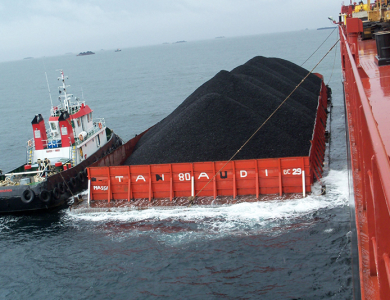Condition assessment
Cargo Condition Survey Service: Process, Standards, and Practical Applications
In the context of thriving global trade, ensuring the condition of goods throughout transportation, storage, and delivery has become a critical factor in the success of transactions. Cargo Condition Survey services play a vital role in verifying and protecting product quality, helping stakeholders mitigate risks, resolve disputes, and comply with legal regulations. This article provides a comprehensive overview of cargo condition surveys, from basic concepts to practical applications across various industries.
1. What is a Cargo Condition Survey?
A cargo condition survey is the process of visual and technical inspection to assess the actual state of goods at a specific point in time. This service is typically conducted by independent surveyors or authorized agencies to provide objective evidence of cargo conditions before, during, and after transportation.
1.1. Objectives of a Cargo Condition Survey
-
Verify the actual condition of goods against contractual descriptions.
-
Detect damage or deterioration due to improper handling or storage.
-
Serve as a basis for dispute resolution among involved parties (buyers, sellers, insurers, carriers).
-
Comply with customs regulations and other legal requirements.
1.2. Applicable Goods
-
Import/export cargo (containers, bulk goods, packaged items).
-
Perishable goods (food, pharmaceuticals, fresh produce).
-
Hazardous materials (chemicals, flammable liquids).
-
Machinery and industrial equipment.
2. Why is a Cargo Condition Survey Necessary?
2.1. Protecting Stakeholder Interests
-
Buyers: Ensure goods meet agreed-upon quality standards.
-
Sellers: Prove goods were delivered in proper condition.
-
Carriers: Determine liability (if any) for damaged goods.
2.2. Minimizing Financial Risks
-
Avoid losses from uncompensated cargo damage.
-
Reduce litigation costs with clear survey evidence.
2.3. Meeting Insurance Requirements
-
Insurers often require condition surveys before approving claims.
2.4. Legal Compliance
-
Some goods must undergo condition surveys before customs clearance.
3. Cargo Condition Survey Process
3.1. Pre-Survey Preparation
-
Gather relevant documents (contracts, bills of lading, initial cargo photos).
-
Determine appropriate inspection methods.
-
Check survey tools and equipment.
3.2. Conducting the Survey
-
Visual Inspection:
-
Check packaging and seals.
-
Look for signs of damage, moisture, or deformation.
-
-
Detailed Inspection:
-
For packaged goods: Conduct random sampling.
-
For bulk goods: Take representative samples.
-
Record photos/videos as evidence.
-
-
Damage Assessment (if applicable):
-
Improper packaging.
-
Poor storage/transport conditions.
-
Prolonged warehousing.
-
3.3. Survey Report
-
Detailed description of cargo condition.
-
Classification of damage severity (if any).
-
Recommended corrective actions.
-
Legally valid survey certificate.
4. Survey Methods
4.1. Visual Inspection
-
Applied to most goods.
-
Assesses external damage signs.
4.2. Equipment-Based Inspection
-
Moisture meters (for agricultural goods).
-
Ultrasonic corrosion detectors (for metals).
4.3. Laboratory Testing
-
Sample analysis for composition/quality (food, pharmaceuticals).
4.4. Remote Monitoring
-
IoT-based real-time tracking (long-distance shipments).
5. Applicable Standards
5.1. International Standards
-
ISO 1073: General cargo inspection.
-
ASTM D5639: Shipping cargo guidelines.
5.2. Industry Regulations
-
IMDG Code: For dangerous sea shipments.
-
HACCP: For food/beverages.
5.3. National Standards
-
TCVN 7450: Import/export cargo inspection.
-
QCVN 01-190: Agricultural storage standards.
6. Practical Applications
6.1. In Import/Export
-
Pre-shipment container inspections.
-
Cargo condition checks at arrival ports.
6.2. In Cargo Insurance
-
Supports claim settlements.
-
Determines damage causes/extent.
6.3. In Logistics
-
Monitors cargo in supply chains.
-
Early issue detection for timely resolution.
7. Reputable Surveyors
7.1. International Organizations
-
SGS (Switzerland)
-
Bureau Veritas (France)
-
Intertek (UK)
7.2. Domestic Organizations
-
Vinacontrol
-
QUATEST
-
Vietnam Survey
8. Costs & Timeframe
8.1. Costs
-
Basic: 1,000,000 – 5,000,000 VND (varies by cargo type).
-
Complex: Up to 10,000,000 VND.
8.2. Duration
-
Basic: 1–3 days.
-
In-depth: 3–7 days.
Conclusion
Cargo condition surveys are indispensable in modern trade, helping stakeholders manage risks effectively. Choosing professional surveyors, following proper procedures, and adhering to standards maximize business benefits. Companies should view this as a necessary investment rather than an added cost to safeguard long-term interests.
Contact reputable surveyors today for expert consultation and support!
 Email: surveyor.oceanhigh@osivietnam.com
Email: surveyor.oceanhigh@osivietnam.com
 Hotline:
Hotline: 





